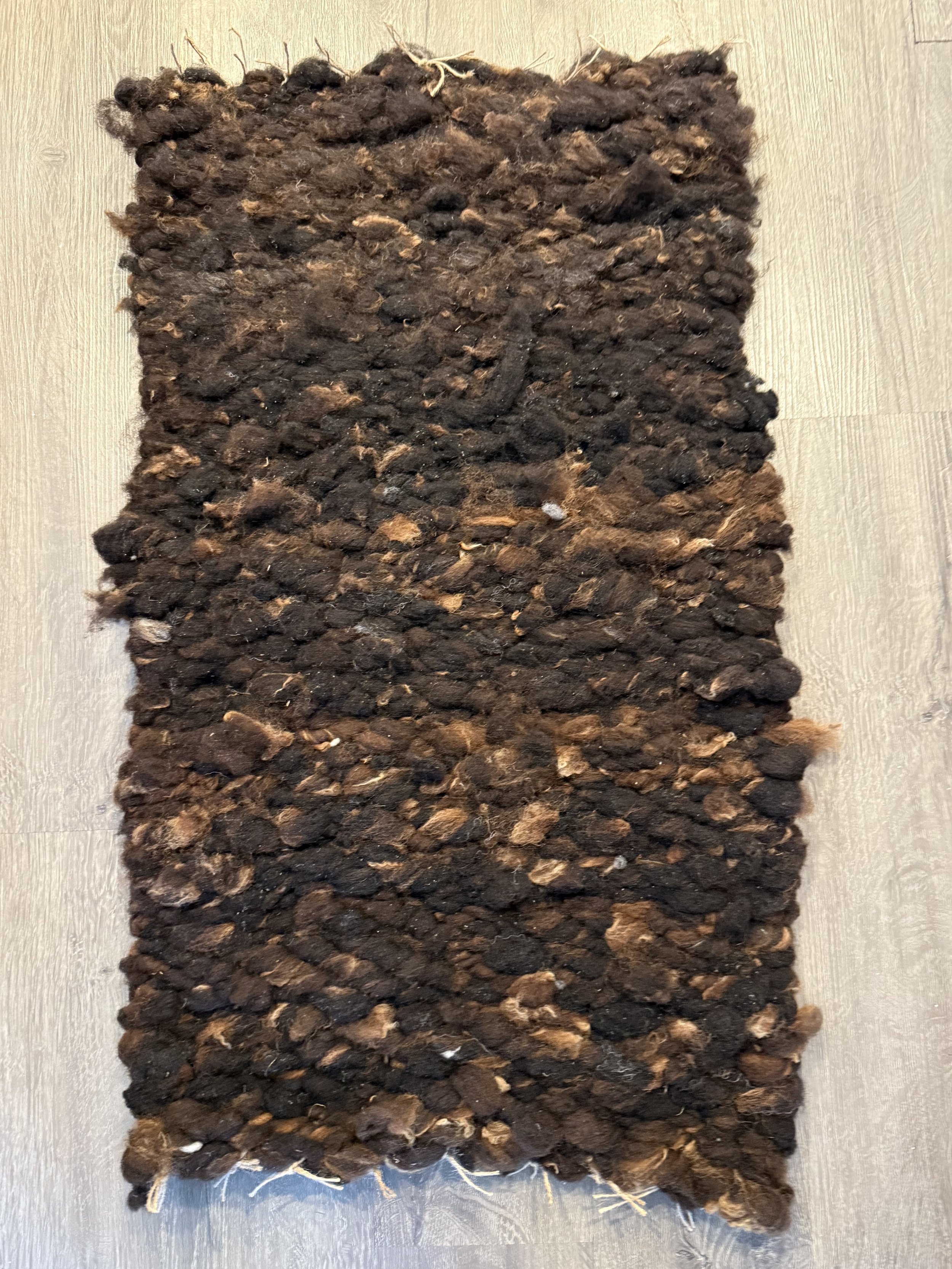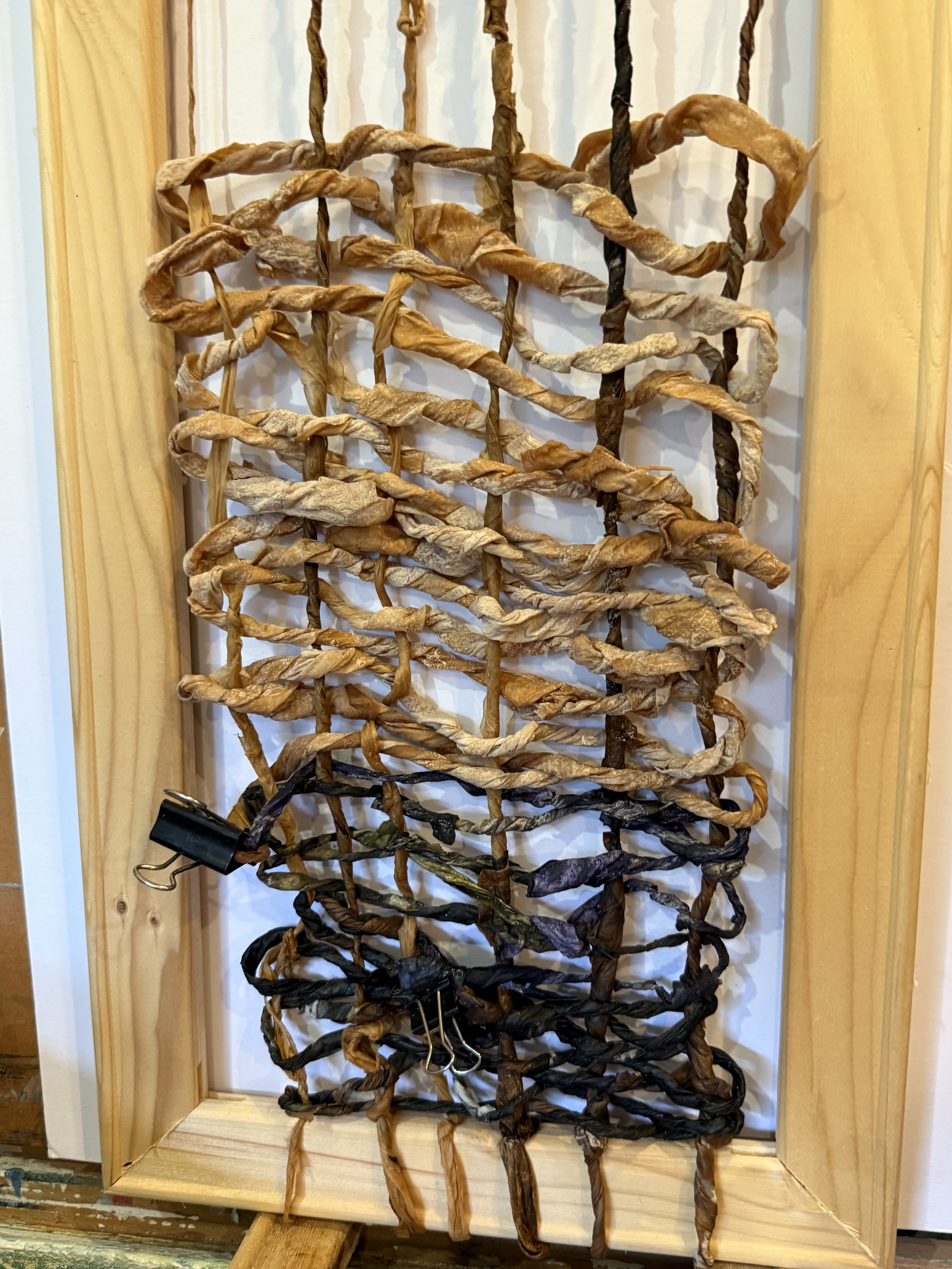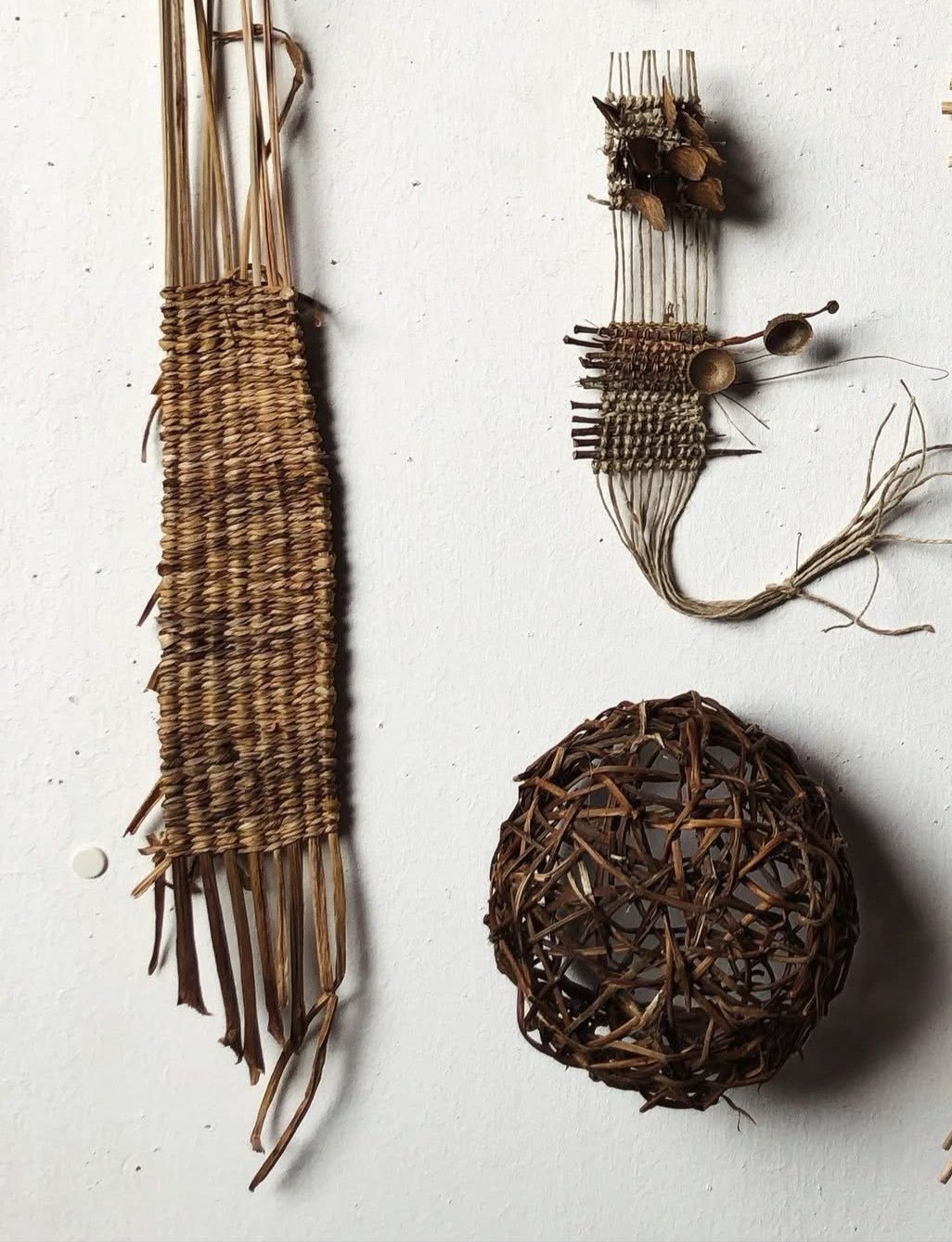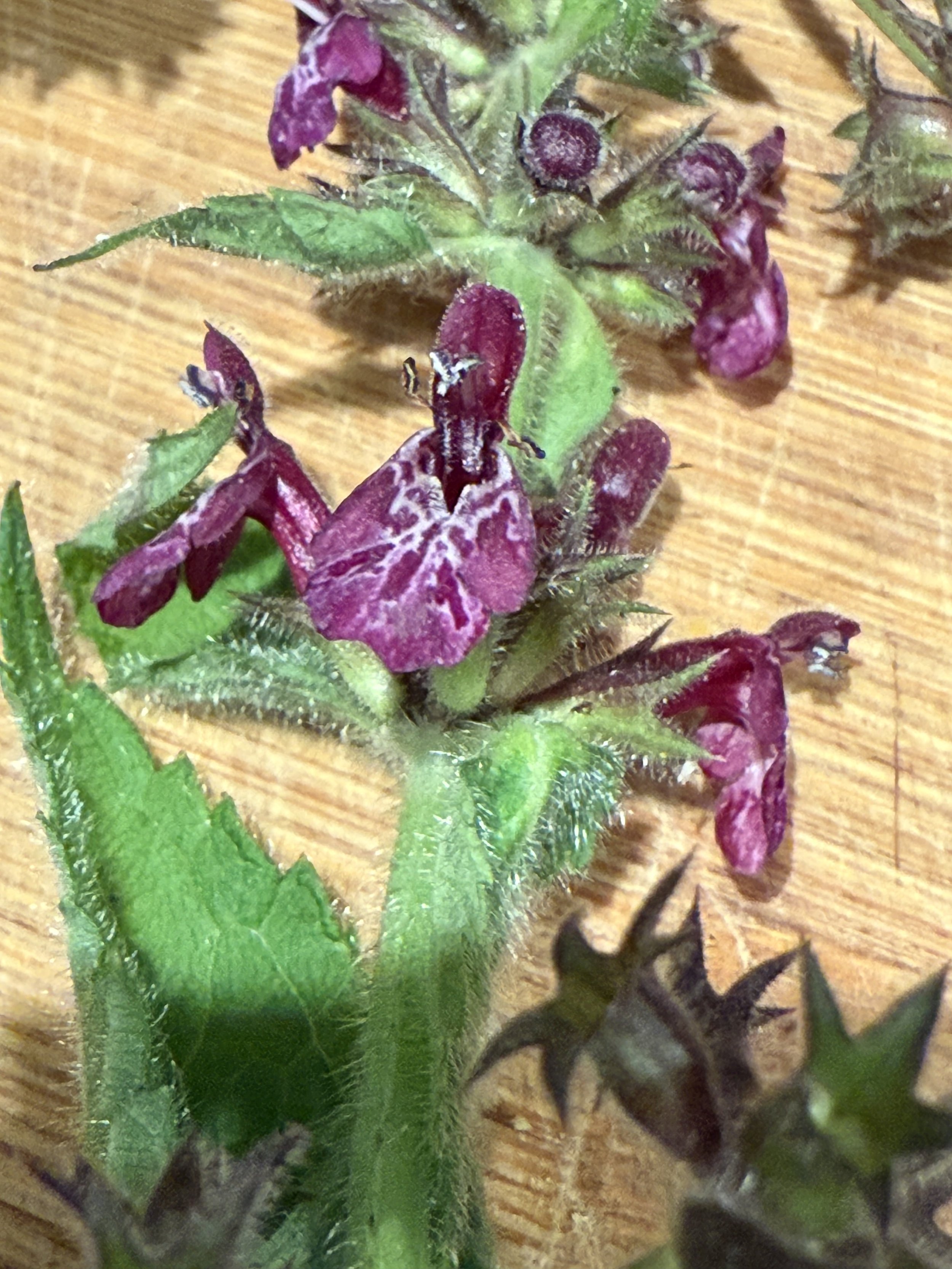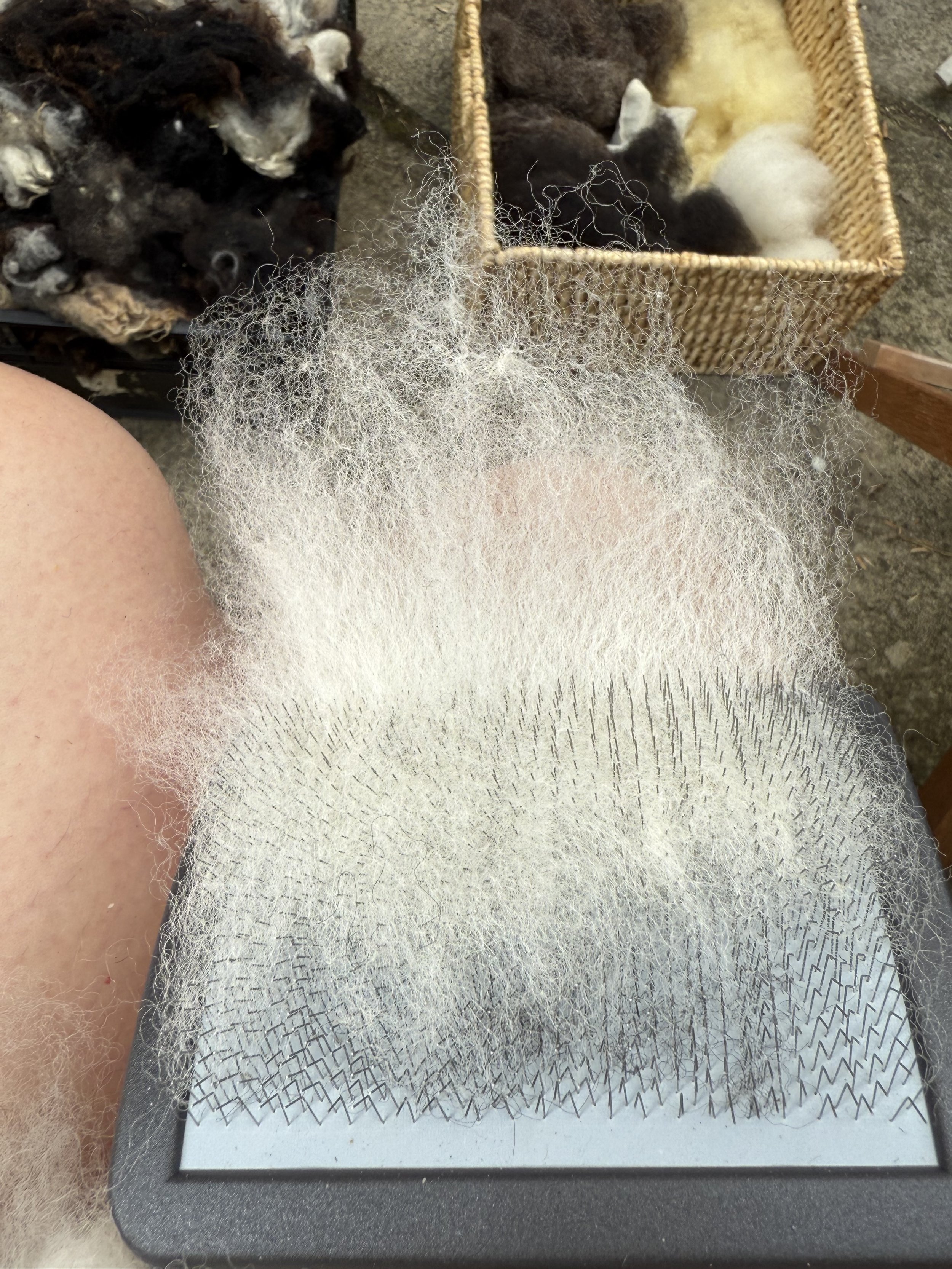Reweaving the Divide: Craft, Fine Art, and Ecological Repair in Contemporary Practice
Abstract
This paper explores the ecological and feminist potential of reintegrating craft practices into contemporary fine art, arguing that dismantling the artificial binary between "fine art" and "craft" is a necessary act of creative and environmental repair. Through a practice-based lens rooted in natural material work, weaving, making, collecting and natural dyeing, the research positions historically feminised crafts as vital technologies of care, sustainability, and resistance. Drawing from ecofeminist theory, material culture studies, and post-growth design, it proposes that craft is not a nostalgic retreat but a radical response to climate collapse and extractive capitalist models of art production.
Weaving together theory, practice, and auto ethnographic reflection, the work challenges the patriarchal and colonial hierarchies that have long devalued "women’s work" in the arts. It presents craft as a form of low-carbon making that foregrounds repair over replacement, slowness over spectacle, and interdependence over individualism. By bringing fine art and craft back under a shared ecological ethos, the project outlines an artistic methodology that is materially grounded, politically urgent, and rooted in the ethics of care.
This research contributes to emerging discourses in sustainable art practice, neurodivergent creativity, and feminist art history, reclaiming the nature based arts not only as modes of expression but as instruments of cultural and ecological transformation.

Introduction
Reweaving the Divide: Craft, Fine Art, and Ecological Repair in Contemporary Practice
In a time of escalating climate emergency, material scarcity, and cultural fragmentation, the question of how we make, and what we choose to value in our making, has never been more urgent. Within the visual arts, the long-standing binary between “fine art” and “craft” is increasingly being re-examined, not simply as an aesthetic or theoretical issue, but as a material, ecological, and political one. This paper begins with a simple proposition: that reuniting fine art and craft is not merely about challenging institutional hierarchies or reclaiming marginalised practices, it is a form of ecological repair.
The distinctions between art and craft are often taken for granted in Western cultural discourse. “Fine art” is presumed to be intellectual, expressive, and autonomous, intended for contemplation, framed by galleries and markets. “Craft,” by contrast, is seen as functional, repetitive, and rooted in domestic or vernacular contexts. Yet this dichotomy is not neutral. It is a product of Enlightenment rationalism, colonialism, industrialisation, and patriarchal ideology. It privileges certain forms of making while devaluing others, particularly those historically practised by women, Indigenous peoples, and working-class communities¹.
My own artistic journey has been shaped by this tension. As a practicing fine artist, I was trained in an environment that subtly (and sometimes explicitly) discouraged engagement with traditional craft. Techniques such as ceramics, hand-stitching, and fabric dyeing, which were central to my early creative instincts. Were framed as less serious, less conceptual, and ultimately less valid within the realm of contemporary fine art. I was told that these forms belonged elsewhere: in design departments, in hobbyist clubs, in heritage museums. As a result, I internalised a division that disconnected me from an intuitive and embodied way of working, until I began, post-graduation, to re-embrace these methods not as a compromise but as a reclamation.
This reclamation has opened up a broader inquiry: what does it mean to make art in a time of ecological collapse? How do we reconcile the often unsustainable demands of the contemporary art world, its global transport, industrial-scale production, and conceptual distance from materials, with the need for more rooted, responsible, and regenerative practices? The answer, I believe, lies in looking closely at craft, not just as a set of techniques, but as a way of thinking, living, and relating to the world².
Craft, in its most expansive sense, is ecological. It is grounded in locality, resourcefulness, and interdependence³. It favours slowness over speed, repair over replacement, and depth over spectacle. It honours the knowledge of the hand, the nuance of material, and the rhythms of season and soil. These values are not only antidotes to climate crisis, they are blueprints for a different kind of artistic and cultural future⁴.
Bringing fine art and craft back under one banner is therefore not a nostalgic gesture but a radical one. It invites a redefinition of artistic value that is based not on exclusivity or abstraction, but on care, sustainability, and connection. It suggests that foraged foods, natural remedies, stitching, ceramics, natural dyes, and woven forms are not secondary to conceptual art but are conceptually rich in their own right, deeply entangled with histories of resistance, survival, and place⁵.
This paper draws on feminist theory, ecological aesthetics, and decolonial critique to interrogate the persistent hierarchy between art and craft. It begins by tracing the historical origins of this divide, identifying the ideological forces that constructed it. It then explores how craft methodologies, especially those practised by women and Indigenous makers, embody ecological wisdom and resilience. Through analysis of contemporary art practices (including my own), the paper illustrates how artists are reclaiming craft not only to challenge institutional frameworks but to address the planetary crisis in material and meaningful ways.
As a dyslexic artist, I also bring a neurodiverse lens to this inquiry. My relationship to text and theory has always been nonlinear and tactile. Making, for me, has always been a form of thinking, through doing, touching, arranging⁶. This embodied epistemology aligns closely with craft’s intelligence: a kind of knowing that resides in the fingers as much as the mind⁷. In revaluing craft, I am also revaluing a form of learning and expression that has often been marginalised, not just by academic institutions but by the dominant culture of disembodied knowledge.
The creative works discussed in this paper are not presented as illustrations of theory, but as critical engagements in their own right. Stitching becomes a form of protest. Weaving becomes a meditation on time and climate. Natural dyes become pigments of place, charged with the memory of soil and sun. In these acts, the material and the metaphorical collapse into one another. Craft is no longer the shadow of art, it is its conscience⁸.
Ultimately, this research is not only about rethinking what art is but about imagining what art can do. It asks: how can artists participate in ecological repair not just in content, but in method? What happens when we reframe creativity as care, and production as interdependence? And how might reclaiming the craft ethos help us move toward a more inclusive, sustainable, and rooted practice of art-making?
In the words that follow, I will explore these questions through theory, history, and practice, drawing threads between past and present, hand and land, fibre and future. This is not merely an academic inquiry but a lived one. It is about returning to the wisdom embedded in materials, in slowness, in forgotten techniques, and about reimagining the role of the artist as a steward, a weaver, a caretaker of worlds.
Footnotes:
Adamson, Glenn. Thinking Through Craft. Bloomsbury, 2007.
Haraway, Donna J. Staying with the Trouble: Making Kin in the Chthulucene. Duke University Press, 2016.
Ingold, Tim. The Perception of the Environment: Essays on Livelihood, Dwelling and Skill. Routledge, 2000.
Shiva, Vandana. Staying Alive: Women, Ecology and Development. Zed Books, 1988.
hooks, bell. Art on My Mind: Visual Politics. New Press, 1995.
McGilchrist, Iain. The Master and His Emissary: The Divided Brain and the Making of the Western World. Yale University Press, 2009.
Sennett, Richard. The Craftsman. Yale University Press, 2008.
Parker, Rozsika. The Subversive Stitch: Embroidery and the Making of the Feminine. I.B. Tauris, 2010.
